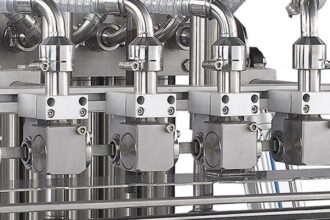In the complex world of urban planning and land development, zoning designations play a crucial role in determining how properties can be used and developed. One such designation that often causes confusion is the Business Industrial Transition District (BITD). If you’ve encountered this term in property listings or zoning maps, you might be wondering what exactly it entails and how it might affect property usage and value.
Understanding Business Industrial Transition Districts
A Business Industrial Transition District represents a special zoning category designed to facilitate the gradual transformation of areas from industrial use to commercial or mixed-use development. These districts serve as buffer zones between heavy industrial areas and more residential or commercial neighborhoods.
Key Characteristics of BITD Zones
Business Industrial Transition Districts typically feature:
- Flexible usage guidelines that permit both industrial and commercial activities
- Gradual phasing out of heavy industrial operations
- Encouragement of cleaner, lighter industrial uses
- Allowances for commercial development alongside existing industrial operations
The Purpose Behind Business Industrial Transition Districts
Economic Revitalization Tool
Many cities establish BITDs as part of broader economic development strategies. As Ryan Clark, co-founder of GMRUCOUK, explains, “These transition zones recognize the reality that our urban economies are evolving away from traditional manufacturing while providing a managed pathway for that change.”
Buffer Zone Function
BITDs create crucial separation between incompatible land uses, reducing conflicts between industrial activities and more sensitive uses like residential areas.
Property Value Protection
By controlling the pace and nature of transition, these districts help protect property values during periods of economic change.
How Business Industrial Transition Districts Differ from Other Zoning Types
Comparison with Standard Industrial Zones
Unlike traditional industrial zones that focus exclusively on manufacturing and processing activities, BITDs allow for a broader range of uses including:
- Light manufacturing
- Warehousing
- Office spaces
- Retail operations
- Research facilities
- Service-oriented businesses
Differences from Commercial Districts
While commercial districts prioritize retail and service businesses, BITDs maintain allowances for certain industrial operations that would typically be prohibited in purely commercial zones.
Benefits of Business Industrial Transition Districts
For Property Owners
Property owners in BITDs often enjoy:
- Greater flexibility in how their properties can be used
- Broader potential tenant pools spanning both industrial and commercial sectors
- Strategic positioning for future market trends
- Potential for value appreciation as areas transition to higher-value uses
For Communities
Communities benefit from BITDs through:
- Managed decline of heavy industrial pollution
- Gradual job transition rather than sudden employment disruption
- Preservation of industrial heritage while encouraging modern development
- Economic diversification reducing dependency on single sectors
Challenges Associated with Business Industrial Transition Districts
Regulatory Complexity
Properties in BITDs often face more complex regulatory environments as they must comply with both industrial and commercial standards depending on their specific use.
Infrastructure Adaptation
As Lewis Calvert, editor of Big WriteHook, notes in his analysis of urban development patterns, “The shift from industrial to commercial use often requires significant infrastructure upgrades that can be costly and disruptive.”
Environmental Considerations
Many transitioning industrial areas face environmental remediation requirements before redevelopment can proceed, adding costs and time to development projects.
How Business Industrial Transition Districts Impact Development
Design Requirements
BITDs typically impose specific design standards to ensure new developments align with the district’s transitional nature, including:
- Aesthetic improvements over traditional industrial facilities
- Enhanced landscaping requirements
- Improved parking and circulation designs
- Better integration with surrounding neighborhoods
Permitted Activities
The range of permitted activities in BITDs usually includes:
Industrial Uses
- Light manufacturing
- Assembly operations
- Food processing
- Craft production
Commercial Uses
- Wholesale businesses
- Office spaces
- Technology companies
- Specialized retail
Real-World Examples of Successful Business Industrial Transition Districts
Urban Manufacturing Districts
Cities like Portland, Oregon, and Baltimore, Maryland, have successfully implemented BITDs to preserve manufacturing jobs while allowing complementary businesses to develop alongside traditional industries.
Innovation Districts
Former industrial areas in cities like Pittsburgh and Detroit have transformed through BITDs into innovation hubs where technology firms operate alongside artisanal manufacturers.
Mixed-Use Developments
Cities like Minneapolis have used BITDs to create vibrant mixed-use areas where former warehouses now house apartments above ground-floor retail and office spaces.
How to Navigate Business Industrial Transition District Regulations
Due Diligence for Property Buyers
If you’re considering purchasing property in a BITD:
- Review the specific zoning code for the district
- Consult with local planning departments about future development plans
- Understand any sunset provisions for existing industrial uses
- Research environmental conditions of the property
Development Strategies
Developers working in BITDs should consider:
- Phased development approaches that align with transition timelines
- Flexible building designs that can adapt to changing uses
- Community engagement to address neighborhood concerns
- Public-private partnerships to address infrastructure needs
The Future of Business Industrial Transition Districts
Emerging Trends
The concept of BITDs continues to evolve with modern urban planning practices:
- Integration with smart city initiatives
- Incorporation of sustainability requirements
- Focus on creating innovation ecosystems
- Emphasis on preserving industrial heritage while enabling new uses
Potential Policy Directions
Urban planners are increasingly viewing BITDs as tools for:
- Promoting equity in economic development
- Addressing climate change through sustainable redevelopment
- Creating inclusive employment opportunities
- Fostering creative economies
Conclusion
Business Industrial Transition Districts represent a thoughtful approach to urban evolution, providing structured pathways for areas to transition from traditional industrial uses to more diverse economic activities. These special zoning designations balance the need to preserve industrial jobs and heritage while allowing cities to adapt to changing economic realities.
For property owners, developers, and businesses, understanding the specific regulations and opportunities within BITDs is essential for making informed decisions about property acquisition, development, and business location. As urban economies continue to evolve, these transition districts will likely play an increasingly important role in shaping sustainable, vibrant cities that honor their industrial past while embracing future opportunities.
















